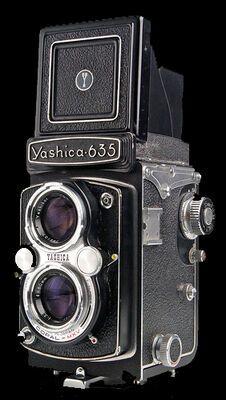TIFF .... Where does it play into discussion of quality?
Feb 1, 2014 14:42:34 #
Is it best to convert JPEGS into TIFF for final storage? So much argument about JPEG vs RAW. After post-processing RAW files, should they ultimately be stored as TIFF files so that they are lossless?
Feb 1, 2014 15:32:59 #
amehta
Loc: Boston
mossgate wrote:
Is it best to convert JPEGS into TIFF for final storage? So much argument about JPEG vs RAW. After post-processing RAW files, should they ultimately be stored as TIFF files so that they are lossless?
There are two questions here.
If you have jpegs, I would simply keep them, there is no advantage to converting to tiff until more processing is involved.
After you post process the raw files, if you do want to save results in a generally readable format, I would save them as tiff or dng, because you can then do more processing if you want down the road.
Many will say that you don't need to export the file at all, since you have the instructions used to recreate the processed image. My concern with that is that you may not have the same program in 5-10 years, and if you have a newer version of the same program, that one may use a slightly different algorithm to do some of the processing, changing your result slightly.
Storage space is fairly inexpensive. And if I'm only doing this with my "keepers", it's not cumbersome to manage.
Feb 1, 2014 18:55:41 #
amehta wrote:
There are two questions here. br br If you have j... (show quote)
Maybe archive them as TIFF and DNG being that at least up to now TIFF has been as universally standard as JPEG (?). I use Adobe products so DNG is their file type anyway.
Feb 1, 2014 19:06:49 #
mossgate wrote:
Is it best to convert JPEGS into TIFF for final storage? So much argument about JPEG vs RAW. After post-processing RAW files, should they ultimately be stored as TIFF files so that they are lossless?
JPEG is already a standard format. No need to archive them in a different format. Since the raw files are proprietary, they mean nothing to me. I usually PP the raw, convert to TIF and/or JPEG, then delete.
Feb 1, 2014 19:08:09 #
amehta
Loc: Boston
mossgate wrote:
Maybe archive them as TIFF and DNG being that at least up to now TIFF has been as universally standard as JPEG (?). I use Adobe products so DNG is their file type anyway.
If you mean the jpegs, I don't think that you gain anything, it's just another step and more stuff to save. The tiff/dng will not have more quality than the jpeg it came from.
Feb 1, 2014 19:14:54 #
amehta
Loc: Boston
mdorn wrote:
JPEG is already a standard format. No need to archive them in a different format. Since the raw files are proprietary, they mean nothing to me. I usually PP the raw, convert to TIF and/or JPEG, then delete.
Which are you deleting, the raw files or the tiff/jpegs?
I'm not going to say you should do anything differently. But if I'm making a suggestion to someone else who wants advice, I would say to keep the raw files. Having them gives the person to do different post processing in the future. One specific use: DxO Optics Pro 9 has a better noise reduction engine for high ISO shots. This means someone could go back to their ISO 6400 shots from two years ago and reprocess them, getting even better results. This probably won't happen often, but if they have some special "keepers", it may be worth trying. Using the original raw files will work best for this.
Feb 1, 2014 19:38:02 #
amehta wrote:
Which are you deleting, the raw files or the tiff/... (show quote)
I generally delete the raw. But, yeah, you have a point... I'm not big on going back and re-PP my older shots, but there might be some value to this for some. I have OCD when it comes to clutter on my computer, so I keep only the very best shots in TIF, which amounts to about 10 per hundred shots. I'm working to improve this ratio. :-)
Funny little observation... When I deliberately go out on a photo shoot, the first shot I take is usually the best. Not exactly sure why this is, but it happens to me a lot. Sorry to digress.
Feb 1, 2014 20:44:02 #
amehta
Loc: Boston
mdorn wrote:
I generally delete the raw. But, yeah, you have a ... (show quote)
I wish I was at a keeper rate of 10 per 100 shots. Of course, that depends on both the nature of the shoot and the goal of the results.
Feb 2, 2014 09:46:58 #
mossgate wrote:
Is it best to convert JPEGS into TIFF for final storage? So much argument about JPEG vs RAW. After post-processing RAW files, should they ultimately be stored as TIFF files so that they are lossless?
I always save my processed RAW files as TIFF.
Feb 2, 2014 10:15:15 #
mossgate wrote:
Is it best to convert JPEGS into TIFF for final storage? So much argument about JPEG vs RAW. After post-processing RAW files, should they ultimately be stored as TIFF files so that they are lossless?
If your original file is a jpg, just store that, but store it in write protected mode so you don't accidentally save any post processing work over it. The benefit with .tif file is that it is not a lossy file format, meaning there is no data "corruption" with each time you save the file over itself. However, saving PP work over it will change the file. It is also a larger file and takes up more storage space.
.jpg format is a lossy file format, by design. Just opening a .jpg file and saving it again, over itself, will change the file. Will you see that change, most likely not. Numerous open / save operations will eventually cause degradation of the original image that is observable.
So, back to your question. If you save your original .jpg file, write protect it, do any PP on it and save it to a different file name, your original will stay the way it came out of the camera.
--Bob
Feb 2, 2014 11:46:44 #
mossgate wrote:
Is it best to convert JPEGS into TIFF for final storage? So much argument about JPEG vs RAW. After post-processing RAW files, should they ultimately be stored as TIFF files so that they are lossless?
raw files should be kept forever like you would a negative. If you did some post processing that involved layering, then that image should be saved forever too. It doesn't matter if you saved the layered image as a tif or psd, save it so you remember how you did it. The final image format should be jpg if you plan to print or send the data anywhere. You can save this or not. It doesn't matter since you'll be saving the layered image which is exactly the same as the jpg except it's not flattened yet.
Feb 2, 2014 12:03:57 #
mossgate wrote:
Is it best to convert JPEGS into TIFF for final storage? So much argument about JPEG vs RAW. After post-processing RAW files, should they ultimately be stored as TIFF files so that they are lossless?
I save/store as TIFFS those that I intend to have printed; save the raws of the same, save as jpegs to share. I probably do "waste a lot of memory". Not really a big deal, these days.
Feb 2, 2014 12:25:32 #
Same here, save RAW files. When I offload from the camera I have a separate directory tree for RAWs. My thinking is this has all the original data from the camera and I can always recover images or reprocess at a later date. Typically save photos for sharing as a jpeg and if highest quality is needed I save to TIFF. Separate directories for those files as well. Having separate directories makes long term orginazation and retrieval much easier. Also makes backup copies to external hard drive a snap too. Simply drag the folder(s) over to an external drive(s).
LoneRangeFinder wrote:
I save/store as TIFFS those that I intend to have printed; save the raws of the same, save as jpegs to share. I probably do "waste a lot of memory". Not really a big deal, these days.
Feb 2, 2014 12:48:38 #
Thanks so much to all of you for your input. I have only been using my new camera for a short while and the process of learning has been made vastly easier by being part of this UHH site. :thumbup: ;) Thanks, too, to anyone else who leaves any following messages.
Feb 2, 2014 13:12:51 #
LoneRangeFinder wrote:
I save/store as TIFFS those that I intend to have printed; save the raws of the same, save as jpegs to share. I probably do "waste a lot of memory". Not really a big deal, these days.
Memory is cheap... why not? :-)
If you want to reply, then register here. Registration is free and your account is created instantly, so you can post right away.





